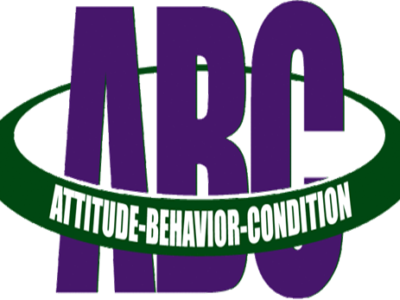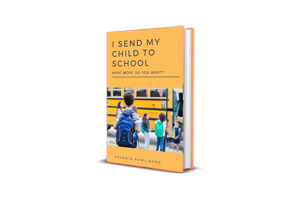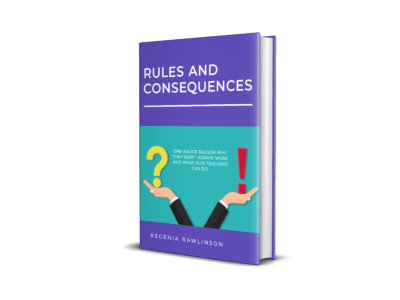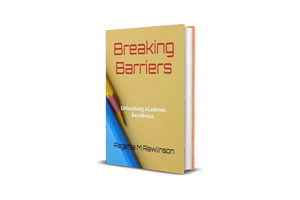Breaking Barriers: Unleashing Academic Excellence
THE CHALLENGE Education, then, beyond all other devices of human origin is the great equalizer of the conditions of men- the balance wheel of machinery. Horace Mann Toxically motivated, angry, and disconnected students – sound familiar? When the bell rings …
Overview
THE CHALLENGE
Education, then, beyond all other devices of human origin is the great equalizer of the conditions of men- the balance wheel of machinery. Horace Mann
Toxically motivated, angry, and disconnected students – sound familiar? When the bell rings for the first time to signal the beginning of the new school year, hundreds of these students march in. They enter with all the other smiling faces without a hint of what is really behind their cheery appearance.
But once in the classroom, they sometimes can exhibit toxic motivation, and anger, and show signs of being disconnected from the learning process. William Glasser, author of Counseling with Choice Theory: The New Reality Therapy (2001) believes that students have a reason for behaving in a particular manner. Glasser believes that children misbehave to avoid a less appealing or less painful alternative.
When teachers plan their academic instruction for a class, they expect participation and contribution from all students. However, toxically motivated, angry, and disconnected students show little interest in classroom activities and refuse to participate. Teachers are frustrated with the attitude and behavior of some students. As a result, teacher/student relationships sometimes become strained and ultimately result in a vicious power struggle. The power struggle may eventually escalate to a referral to an administrator for the smallest infraction. Consequently, an environment of hostility can be created in the classroom and learning opportunities are lessened significantly.
The task of managing student’s hostile classroom environment and maintaining an environment that is conducive to learning for all students can become overwhelming and complex. Managing student behavior in the classroom presents a greater challenge when students are toxically motivated, angry, and disconnected from the learning process. The success of the teacher in managing the behavior of these students will depend upon the techniques and strategies the teacher selects to encourage disconnected students to engage in the learning process (Coil, 2001).
Teachers need to have a thorough understanding of what causes toxically motivated, angry, and disconnected students to exhibit disruptive behavior. This understanding will enable teachers to determine the most appropriate techniques and strategies to use with these students to engage them in the learning process. Professional educators and community members oftentimes offer a variety of explanations. Most will agree that home environment, significant others, caretakers, societal influences, experiences, personalities, and other factors each play a part in determining the moods and goals the students bring to the classroom.
I have concluded after working with students for close to three decades that a reason students bring toxic motivation, anger, and disconnectedness to the classroom is that these students feel limited in their ability to participate in the classroom environment in meaningful and expected ways. They have met with repeated failure in the past and they fear more of the same. This leaves them feeling powerless with a deepening need for positive affirmations. William Glasser, author, and behavioral expert believes that all human beings have five basic needs: love, freedom, power, fun, and belonging. Glasser also believes that a person will do whatever it takes for as long as it takes to meet a perceived need to the point of one’s satisfaction. Unfortunately, for some students, this process could take years and an enormous amount of emotional and psychological energy. This happens partly because these students lack a clear understanding of how to satisfy their needs resulting in motivation, anger, and disconnectedness.
When students believe that they are failures and think they will continue to fail in the future, poor decision-making can be perpetuated. Poor decisions can have a direct impact on academic achievement. Some educators refer to this as the failure syndrome and some define it as learned helplessness (Brophy, 1998, Lumsden, 1994).
These students eventually feel unworthy, unloved, and powerless to change their circumstances. They also view their environment as hostile, uncaring, and unresponsive to their needs. Once these unhealthy views become fully integrated into their psyches, their behaviors mirror their views and manifest in a variety of negative ways. Regrettably, the negative ways in which students manifest their behaviors are through aggression and frustration. Mary Fitzsimmons (1998) suggests that a nurturing and caring environment is one means of providing an antidote for aggression and frustration.
I have worked with thousands of students over the years. Some were motivated to achieve in school while others were like the students I have described here. The most common characteristics among students who wanted to achieve were:
- they felt empowered to offer something to others
- they felt accepted by others
- they felt valued by others
- they felt respected by others
- they exhibited high self-esteem and self-worth
Educators are presented with a great challenge to create environments and opportunities that can enhance learning and encourage motivated, angry, and disconnected students to fully engage in the learning process. Jeremy Brophy (1998) suggests that this environment can be created when teachers provide support, encouragement, and task assistance. Stephen Covey (1990) agrees and emphasizes the importance of teachers communicating care and respect for students to aid in the creation of encouraging classroom environments.
Most students will thrive in a caring classroom environment and for toxically motivated, angry, and disconnected students such an environment has enormous benefits. Overwhelmingly, research has shown schools that make it a priority to meet students’ basic human needs of support, caring, empathy, acceptance, and respect, foster motivation to learn (Purkey, 1999, Bonnie, Lumsden,1997). The indication is clear, if professional educators want to provide the best possible learning environment for students, they must send a clear message that they care not only about what students learn but also how students learn and what they need.
An e-copy of this book can be downloaded from the Village Shop for a nominal fee OR click here Regenia Rawlinson’s Amazon Author Page to order this book from Amazon.com
NOE: This course is 7 hours. The 7 hours refers to the time it will take for teachers to review the activities in each section. The time to complete the activities with the students will depend on the level of students and modifications to the activities.
Curriculum
Curriculum
- 6 Sections
- 52 Lessons
- Lifetime
- ENHANCING ACADEMIC ACHIEVEMENTThis section discusses enhancing academic achievement..3
- BARRIER 1 - TOXIC MOTKIVATIONThis section will discuss the definition of toxic motivation and activities to help students increase motivation for learning.13
- 2.0Toxic Motivation – Introduction
- 2.1ACTIVITY 1.1: GET ACQUAINTED ICE BREAKER5 Minutes
- 2.2ACTIVITY 1.2: ITS ALL RELEVANT10 Minutes
- 2.3ACTIVITY 1.3: WHAT MAKES ME TICK?5 Minutes
- 2.4Activity Sheet. Use with Activity 1:3 (I Am What I Am)10 Minutes
- 2.5ACTIVITY 1.4: FAMILY AFFAIR10 Minutes
- 2.6Activity Sheet: What Is Your Type (Use with Activity 1:4)5 Minutes
- 2.7ACTIVITY 1.5: BEST KEPT SECRET10 Minutes
- 2.8Activity Sheet: Human Heritage Will (Use with Activity 1:5)10 Minutes
- 2.9ACTIVITY 1.6: 1 AM WHAT 1 AM!5 Minutes
- 2.10Activity Sheet: I am What I Am (Use with Activity 1:6)5 Minutes
- 2.11ACTIVITY 1.7: RESCUE ME10 Minutes
- 2.12ACTIVITY 1.8: WHAT’S HAPPENING10 Minutes
- BARRIER 2 - STUDENT ANGERThis section on BREAKING BARRIERS — ANGER, will provide activities to help students develop coping skills to deal with anger. The activities in this section are designed to stimulate student discussion.18
- 3.0BARRIER 2: STUDENT ANGER INTRODUCTION20 Minutes
- 3.1ACTIVITY 2.1: GET ACQUAINTED10 Minutes
- 3.2ACTIVITY 2.2: THE STORMS WITHIN15 Minutes
- 3.3ACTIVITY 2.3: THE HUMAN CONNECTION15 Minutes
- 3.4The Human Connection Worksheet (Use with Activity 2:3)15 Minutes
- 3.5I Am Only Human Worksheet (Use with Activity 2:3)5 Minutes
- 3.6ACTIVITY 2.4: THE WE OF ME15 Minutes
- 3.7Together We Stand Worksheet (Use with Activity 2:4)5 Minutes
- 3.8The We of Me Worksheet (Use with Activity 2:4)5 Minutes
- 3.9Give Honor Where Honor is Due (Use with Activity 2:4)5 Minutes
- 3.10Someone is Watching You Worksheet (Use with Activity 2:4)5 Minutes
- 3.11Activity 2.5: YOU CAN COUNT ON ME10 Minutes
- 3.12What Would You Do Worksheet (Use with Activity 2:5)10 Minutes
- 3.13ACTIVITY 2.6: THIS IS WHAT I STAND FOR!10 Minutes
- 3.14This Is What I Stand For Worksheet (Use with Activity 2:6)5 Minutes
- 3.15ACTIVITY 2.7: TURN AROUND IS FAIR PIAY!10 Minutes
- 3.16Turn Around Is Fair Play Worksheet (Use with Activity 2:7)5 Minutes
- 3.17ACTIVITY 2.8: LET US REASON TOGETHER15 Minutes
- BARRIER 3 - STUDENT DISCONNECTIONEach activity in this section will provide an opportunity for students to get acquainted and/or learn more about each other. In addition, students will understand their interconnectedness with others and how to use these connections as resources to help them reach their full potential. Students will examine beliefs, set goals, explore options, and identify resources in the school and community. Encourage students to see how being disconnected can be a barrier to achievement.11
- 4.0BARRIER 3: STUDENT DISCONNECTION INTRODUCTION20 Minutes
- 4.1ACTIVITY 3.1: ICEBREAKER – GET ACQUAINTED5 Minutes
- 4.2ACTIVITY 3.2: YOU ARE WHAT YOU THINK!10 Minutes
- 4.3Activity Worksheet: Fact or Illusion Worksheet (Use with Activity 3:2)5 Minutes
- 4.4ACTIVITY 3.3: WHEN IN ROME10 Minutes
- 4.5ACTIVITY 3.4: THE BALL IS IN YOUR COURT5 Minutes
- 4.6Activity Sheet: Four Keys Worksheets (Use with Activity 3:4)10 Minutes
- 4.7Activity Worksheet: The Ball is in Your Court (Use with Activity 3:4)5 Minutes
- 4.8ACTIVITY 3.6: IT IS WRITTEN5 Minutes
- 4.9ACTIVITY 3.7: FOR A GOOD CAUSE5 Minutes
- 4.10ACTIVITY 3.8: NOBLE INTENTION5 Minutes
- APPENDIXThis section contains some additional worksheets to be used with the students.7
- Quiz - Breaking Barriers: Unleashing Academic ExcellenceThis section is for the quiz1







